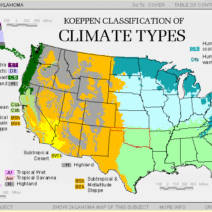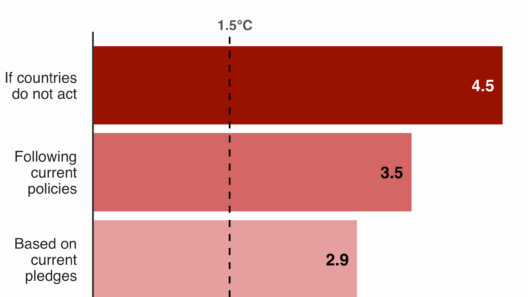Climate change is an omnipresent phenomenon that has far-reaching effects on ecosystems, and its impacts are particularly pronounced in the world of botany. As temperatures soar and weather patterns become increasingly erratic, the arboreal and floral realms are suffering unprecedented alterations. This discourse aims to delve into the intricate relationship between climate change and its effects on leaves, plants, and, ultimately, our broader environment.
One of the most palpable manifestations of climate change is the phenomenon of altered phenology, which refers to the timing of seasonal biological events. Notably, many trees and perennial plants are exhibiting earlier leaf-out in spring and later leaf drop in autumn. This temporal shifting disrupts the synchronized relationships between flora and fauna. For example, birds that rely on insects emerging at specific times for feeding may find themselves in a mismatch, resulting in fledglings not receiving sufficient nutrition during crucial developmental stages. The cascading effects of this mismatch can be profound and may contribute to declining avian populations.
Moreover, temperate zones are witnessing an extensive alteration in leaf senescence—the process by which leaves age and eventually fall. Increased temperatures may cause leaves to lose their vibrancy and structural integrity earlier than anticipated. This premature drop does not merely affect the trees; it alters the entire ecosystem. Fallen leaves play a critical role in nutrient cycling, soil health, and providing habitats for numerous organisms. Thus, when trees shed their leaves too soon, the intricate web of life that depends on these processes falters.
In a similar vein, climate change is inciting shifts in plant distributions. Many species are migrating toward the poles or ascending to higher altitudes as they seek out cooler environments. This phenomenon, termed “climate migration,” poses significant challenges, particularly for species that cannot move quickly or at all due to geographical barriers. Such migrations can lead to increased competition among native and non-native species, potentially driving some to extinction. The consequences extend beyond biological diversity; they impact human agriculture, forestry, and overall ecosystem services that are vital for human survival.
Furthermore, rising levels of carbon dioxide (CO₂) are fueling unexpected growth changes within plant communities. While higher CO₂ concentrations can enhance photosynthesis—a process known as CO₂ fertilization—it can also lead to unbalanced growth patterns. Fast-growing weed species tend to thrive under these conditions, outcompeting native plants and disrupting local habitats. This imbalance leads to monocultures, which lack the resilience of diverse ecosystems and are more susceptible to pests and diseases.
Another crucial aspect of this multifaceted problem involves the impact of extreme weather events, exacerbated by climate change. Droughts, floods, and storms have become more frequent and severe, placing additional stress on plant health. Drought conditions can lead to reduced leaf surface area and overall plant vitality, while intense storms can strip leaves and branches, impairing the plant’s ability to photosynthesize effectively. These physical damages can result in a reduction of biomass and a compromised capacity for carbon sequestration, further fueling the climate crisis.
Acid rain, a less-discussed implication of climate change, can also inflict significant damage on leaf structures. The increasing concentration of atmospheric pollutants, such as sulfur dioxide, contributes to acid precipitation that harms foliage by leaching essential nutrients and directly damaging tissue. The compromised health of leaves diminishes their ability to perform photosynthesis and engage in other critical physiological processes, thereby weakening the plant’s survival prospects.
Notably, certain species of trees, such as the iconic oak and beloved maple, have demonstrated varying degrees of resilience against climate-related stresses. These varieties, characterized by robust adaptive strategies, showcase an important beacon of hope amid distressing trends. Their ability to withstand temperature fluctuations and resist certain pathogens is crucial for preserving not only their species but also the myriad of organisms that depend on them. This resilience suggests that understanding genetic diversity and conservation strategies is imperative to bolster our ecosystems’ future.
The intersection of climate change and plant health necessitates urgent, multifaceted responses. Advocacy for sustainable land management practices, reforestation initiatives, and reducing greenhouse gas emissions are fundamental to addressing these challenges. Engaging in community efforts to restore native vegetation can help to bolster ecosystem resilience and improve the overall health of the environment.
Education plays a pivotal role in this struggle against time. By fostering awareness about the impacts of climate change on leaves and plants, individuals can become empowered to advocate for sustainable practices. Local gardening initiatives, community-supported agriculture, and the promotion of native plant landscaping serve as avenues for hands-on involvement. Engaging in these practices can yield not only environmental benefits but also enriches personal well-being and community cohesion.
In conclusion, climate change poses a severe threat to the delicate fabric of plant life and ecosystems across the globe. The cascading impacts of altered phenology, climate migration, and extreme weather events underline the complex interdependencies within our environment. However, understanding these challenges also illuminates pathways toward resilience and recovery. Collective action, grounded in education and advocacy, can pivot the narrative from despair to one of hope. A heightened awareness of our natural world and the intrinsic value of biodiversity is paramount in the quest for a sustainable future.








